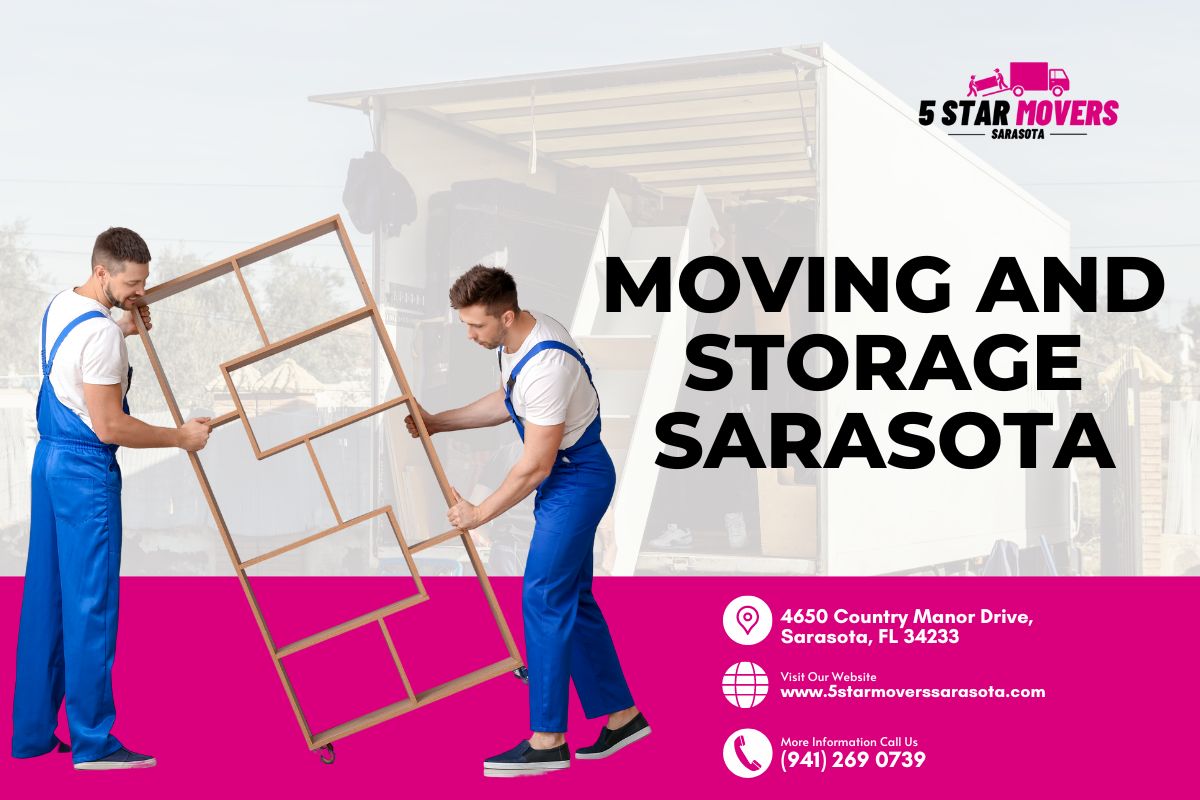


Introduction
Moving can be a stressful and daunting task, but with the right strategies, it can also be an opportunity to declutter and organize your belongings. Before you start packing up your life, it's important to have a plan in place to ensure a smooth transition. In this article, we will explore effective strategies for decluttering and organizing before a move, providing you with practical tips and expert advice to make your moving experience as seamless as possible.
Table of Contents
Why Decluttering is Essential Before a Move Getting Started: Create a Moving Checklist Sorting Through Your Belongings- Organize by Category The Four-Box Method Deciding What to Keep, Donate, Sell, or Discard
- Invest in Clever Storage Solutions Utilize Vertical Space Make Use of Under-Bed Storage
- Gather Packing Supplies Labeling Boxes Pack Room by Room
- Advantages of Hiring Professional Movers Choosing the Right Moving Company
- Notify Utility Companies and Change of Address Create an Inventory List Moving Day Essentials
Why Decluttering is Essential Before a Move
Decluttering is an essential step before a move for several reasons. Firstly, it allows you to eliminate unnecessary items and reduce the number of belongings you need to pack and transport to your new home. This not only saves you time and effort during the moving process but also reduces moving costs.
Additionally, decluttering provides an opportunity to start fresh in your new space. By clearing out the clutter, you can create a more organized and peaceful environment that reflects your current lifestyle and preferences. It also prevents you from bringing unnecessary items into your new home, helping you maintain a clutter-free living space.
Getting Started: Create a Moving Checklist
Before diving into the decluttering process, it's important to create a moving checklist. This checklist will serve as a roadmap for your move, ensuring that you don't overlook any important tasks along the way. Start by identifying key milestones such as finding a moving company, packing, notifying utility companies, and changing your address.
Having a checklist not only helps you stay organized but also provides peace of mind knowing that you have everything under control. Break down larger tasks into smaller actionable steps to make the process more manageable and less overwhelming.
Sorting Through Your Belongings
Organize by Category
To effectively declutter before a move, it's helpful to organize your belongings by category. This allows you to see the full extent of what you own and makes decision-making easier. Begin by sorting items into categories such as clothing, books, kitchenware, electronics, and sentimental items.
Once sorted, evaluate each category individually and determine which items are essential and hold significant value to you. This process helps identify duplicates or items that are no longer needed or used. Consider the functionality and sentimental value of each item before deciding whether to keep, donate, sell, or discard it.
The Four-Box Method
The four-box method is a popular technique for decluttering before a move. It involves labeling four boxes or containers with different categories: keep, donate/sell, trash/recycle, and undecided. As you go through each item in your home, place them into the appropriate box based on their category.
This method encourages decision-making by forcing you to categorize http://emilianodruj984.bearsfanteamshop.com/simplify-your-life-why-you-should-declutter-before-hiring-movers-near-you each item and prevents you from holding onto unnecessary belongings. It also streamlines the packing process, as items are already sorted into their respective categories.
Deciding What to Keep, Donate, Sell, or Discard
When decluttering before a move, it's important to make intentional decisions about what to keep, donate, sell, or discard. Ask yourself the following questions to help guide your decision-making:
- Do I use this item regularly? Does this item hold sentimental value? Will I realistically use this item in my new home? Can this item be easily replaced if needed?
By evaluating each item based on its functionality and value, you can make informed decisions about what to keep and what to let go of. Consider donating gently used items to local charities or selling them online or through a yard sale. Discard broken or unusable items responsibly by recycling or disposing of them properly.
Maximizing Space and Storage Solutions
Invest in Clever Storage Solutions
One effective strategy for organizing before a move is investing in clever storage solutions. These solutions help maximize space and keep your belongings organized both during the move and after you settle into your new home. Here are some ideas for clever storage solutions:
Storage bins with dividers: Use storage bins with built-in dividers to keep small items like jewelry, office supplies, or craft materials neatly organized. Hanging organizers: Utilize hanging organizers in closets or behind doors to store shoes, accessories, or cleaning supplies. Over-the-door shoe racks: Free up floor space by using over-the-door shoe racks to store shoes vertically. Under-shelf baskets: Maximize shelf space by attaching under-shelf baskets to store additional items such as towels or pantry staples.By incorporating these storage solutions into your packing process, you can optimize space and ensure that everything has its designated place in your new home.
Utilize Vertical Space
When organizing before a move, it's important to make the most of your vertical space. This means utilizing wall shelves, hanging storage, and tall furniture pieces to maximize storage capacity. By going vertical, you can free up floor space for other purposes while still keeping your belongings easily accessible.
Consider installing floating shelves in your kitchen or living room to display decorative items or store books and essentials. Use wall-mounted hooks or pegboards in entryways or closets to hang coats, bags, or accessories. Invest in tall bookshelves or wardrobes that provide ample storage without taking up too much floor space.
Make Use of Under-Bed Storage
Under-bed storage is often overlooked but can be a valuable space-saving solution, especially when moving to a smaller home or apartment. Invest in under-bed storage containers or vacuum-sealed bags to store seasonal clothing, bedding, or other items that are not frequently used.
By utilizing the space under your bed, you can declutter your bedroom and create a clean and organized environment.
Packing Efficiently
Packing efficiently is crucial for a smooth and organized move. Here are some tips to help you pack effectively:
Gather Packing Supplies
Before you start packing, gather all the necessary supplies such as moving boxes, bubble wrap, packing tape, markers, and labels. Having everything readily available will save you time and prevent unnecessary interruptions during the packing process.
Consider purchasing specialty boxes designed for specific items such as wardrobe boxes for hanging clothes or dish packs for fragile kitchenware. These specialized boxes provide extra protection and make unpacking easier.
Labeling Boxes
Labeling boxes is essential for an organized move. Clearly mark each box with its contents and the room it belongs to. This makes it easier for movers to place the boxes in their respective locations in your new home and helps you prioritize unpacking based on urgency.
You can use color-coded labels or simply write the details on the box itself. Make sure to label fragile items as "fragile" to ensure they receive extra care during transportation.
Pack Room by Room
To stay organized during the packing process, pack one room at a time. This not only helps you maintain focus but also ensures that similar items are packed together, making unpacking more efficient.
Start with rooms or areas that are not frequently used, such as guest bedrooms or storage spaces. As you pack each room, clearly mark the boxes and keep an inventory list to track your belongings.
Hiring Professional Movers vs. DIY Moving
When planning a move, one of the key decisions you will need to make is whether to hire professional movers or handle the move yourself. Here are some factors to consider:
Advantages of Hiring Professional Movers
- Efficiency: Professional movers have experience and expertise in efficiently packing and transporting belongings, ensuring a smooth and timely move. Time-saving: By hiring professionals, you can focus on other aspects of the move while leaving the heavy lifting and logistics to them. Insurance coverage: Reputable moving companies provide insurance coverage for your belongings, giving you peace of mind in case of any damages or loss. Equipment and resources: Professional movers come equipped with all the necessary tools, equipment, and packing supplies needed for a successful move.
Choosing the Right Moving Company
If you decide to hire professional movers, it's essential to choose a reputable and reliable moving company. Here are some tips for selecting the right moving company:
Research: Conduct thorough research and read reviews of different moving companies in your area. Look for companies with positive feedback and a proven track record. Get multiple quotes: Obtain quotes from several moving companies and compare their pricing, services, and additional fees before making a decision. Check licensing and insurance: Ensure that the moving company is properly licensed and insured to protect your belongings during the move. Ask for recommendations: Seek recommendations from friends, family, or real estate agents who have recently moved for reliable moving companies they have used.By choosing the right moving company, you can ensure a smooth and stress-free moving experience.
Managing the Moving Process
Notify Utility Companies and Change of Address
Before your move, it's important to notify utility companies of your upcoming relocation. Contact your electricity, gas, water, cable, internet, and other service providers to schedule disconnection at your current address and connection at your new home.
Additionally, inform the post office of your change of address to ensure that your mail is forwarded to your new location. Update your address with banks, insurance companies, subscriptions, and any other organizations that regularly send you mail.
Create an Inventory List
Creating an inventory list is a valuable strategy for managing the moving process. As you pack each box, write down its contents on your inventory list along with its corresponding box number or label. This helps you keep track of your belongings and ensures that nothing gets lost during transportation.
You can also take photos or videos of valuable items or fragile pieces before packing them as an additional reference. Having a detailed inventory list simplifies unpacking and allows you to quickly locate specific items in your new home.
Moving Day Essentials
Prepare a bag or box with essential items that you will need on moving day and during the first few days in your new home. This includes toiletries, medications, a change of clothes, important documents (such as lease agreements or contracts), phone chargers, snacks, and any other necessities you may require before fully unpacking.
Having these essentials easily accessible prevents the need to rummage through boxes or make unnecessary trips to find essential items.
FAQs
How far in advance should I start decluttering before a move?
It's recommended to start decluttering at least a few weeks before your move. This allows you enough time to thoroughly evaluate each item and make decisions without feeling rushed.
What should I do with items I no longer want or need?
For items you no longer want or need, consider donating them to local charities, selling them online or through a yard sale, or giving them away to friends or family members who may find value in them.
Should I hire professional movers or do it myself?
The decision to hire professional movers or handle the move yourself depends on various factors such as your budget, time constraints, and the complexity of the move. Professional movers offer convenience and expertise but come at an additional cost.
How can I ensure the safety of my belongings during the move?
To ensure the safety of your belongings during the move, pack fragile items securely using bubble wrap or packing paper. Label boxes containing delicate items as "fragile" and communicate any specific handling instructions to the movers.
What are some tips for unpacking and organizing after the move?
When unpacking, start with essentials such as bedding, kitchenware, and toiletries. Unpack one room at a time and focus on organizing each room before moving on to the next. Utilize storage solutions like bins or shelves to keep items organized and create a functional living space.
Conclusion
Moving can be a challenging process, but with effective strategies for decluttering and organizing before a move, you can simplify the process and ensure a smooth transition. By starting early, creating a moving checklist, sorting through your belongings, maximizing space with clever storage solutions, packing efficiently, making informed decisions about hiring professional movers, managing the moving process effectively, and utilizing helpful tips for unpacking and organizing after the move, you can turn this daunting task into an opportunity for positive change in your life. Remember to stay organized, prioritize what is essential, and enjoy the journey to your new home.